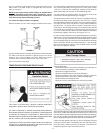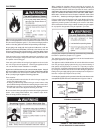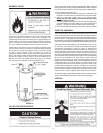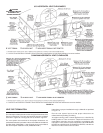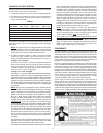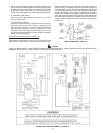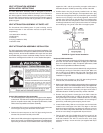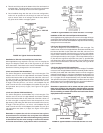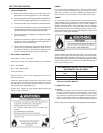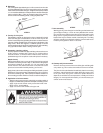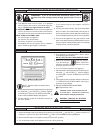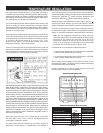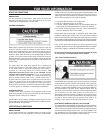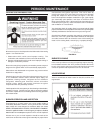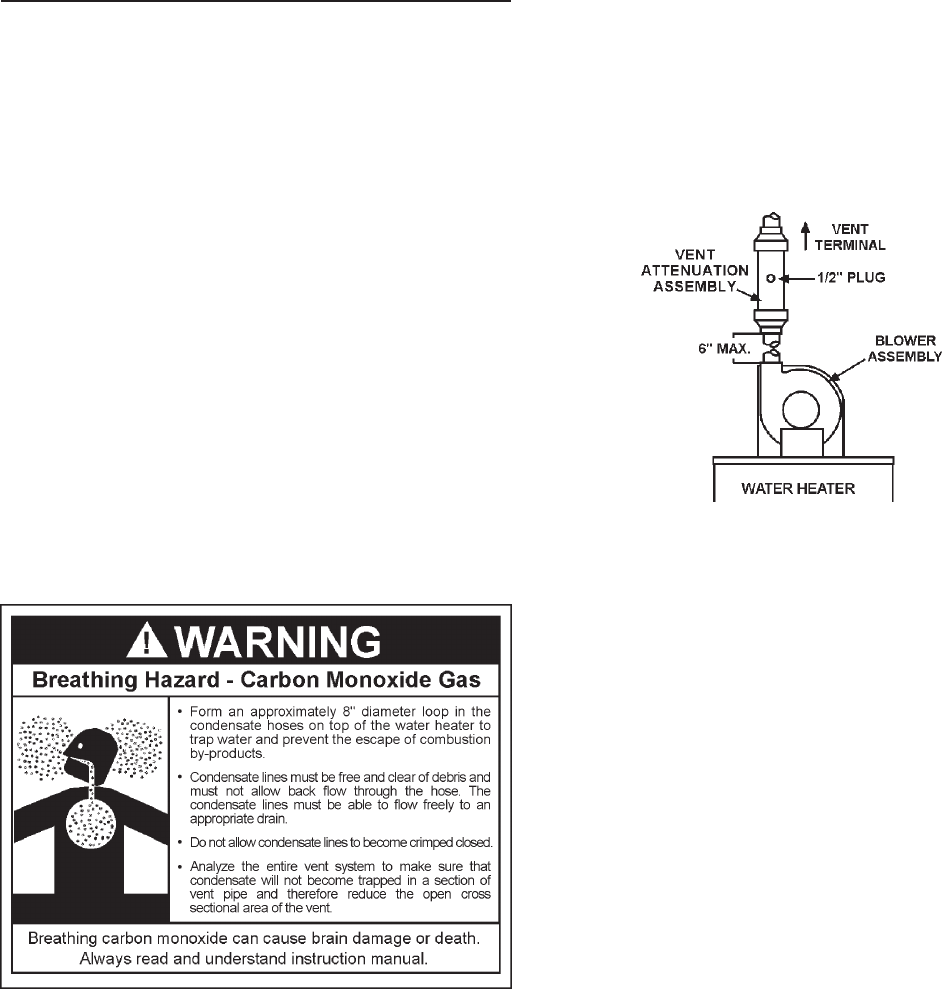
21
VENT ATTENUATION ASSEMBLY
INSTALLATION INSTRUCTIONS
The Vent Attenuation Assembly (VAA) is designed to provide a
reduction in fan noise created in the blower wheel. This installation of
this VAA is optional. Review directions thoroughly prior to installing
the new VAA. Please contact the manufacturer of the water heater as
shown in the instruction manual with any questions or for additional
product support.
VENT ATTENUATION ASSEMBLY KIT PARTS LIST
The kit consists of the following items. If a part is missing, use the
contact information in the instruction manual to acquire missing
component(s).
• vent attenuation assembly
• flexible tubing
• hose barb
• hex plug (installed on VAA)
• instruction sheet
VENT ATTENUATION ASSEMBLY INSTALLATION
The VAA is designed for both vertical and horizontal installations. The
vertical installation does not require the additional hose barb and flexible
tubing. However, the horizontal installation will require the hose barb
and flexible tubing to release condensate buildup from the VAA. See
instructions and diagrams that follow for a more detailed description.
Vertical VAA Installations (Recommended)
1. The VAA is designed to accept two inch PVC pipe into the adapters
on both ends. The VAA can be installed to the piping from either side
(there is no specific inlet or outlet). For optimum performance, install
VAA as close as possible to the blower assembly.
2. Use standard PVC cement (not included with kit) and glue the two
inch PVC pipe coming from the blower into the VAA.
3. Perform the same sequence on the PVC pipe coming from the
exhaust side (vent terminal side) of the VAA.
4. Make sure the VAA and vent pipe is supported securely to a permanent
fixture (stud or wall). Use standard support straps (not supplied with
kit) that may be found at a local hardware store. Failure to properly
support the VAA and the surrounding vent pipe could create a
hazardous situation. DO NOT puncture any surface of the VAA.
5. Confirm that the hex plug is securely installed in the 1/2" fitting
found on the center of the VAA pipe. It is imperative that the plug
is secure and air tight to prevent any combustion gases escaping
into the room. If the plug is not securely tightened, remove and
reinstall using Teflon tape on the threads. Once installed along
with the rest of the vent configuration, make sure to operate the
unit through at least one heat up cycle to ensure there is no leakage
around the plug or any joints of the VAA or vent pipe system.
FIGURE 22: Typical Vertical Installation
Horizontal VAA Installations
1. The VAA is designed to accept two inch PVC pipe into the adapters on
both ends. The VAA can be installed to the piping from either side
(there is no specific inlet or outlet). For optimum performance, install
VAA as close as possible to the blower assembly.
2. Use standard PVC cement (not included with kit) and glue the two
inch PVC pipe coming from the blower into the VAA. Make sure
the 1/2" fitting is on the bottom side of the VAA. This will be used
to run the condensate hose to a suitable drain. See typical vent
installation in Figure 23.
3. Perform the same sequence on the PVC pipe coming from the
exhaust side (vent terminal side) of the VAA.
4. Make sure the VAA and vent pipe is supported securely to a permanent
fixture (stud or wall). Use standard support straps (not supplied with
kit) that may be found at a local hardware store. Failure to properly
support the VAA and the surrounding vent pipe could create a
hazardous situation. DO NOT puncture any surface of theVAA.
5. Remove hex plug from the center pipe of the VAA. Locate the
hose barb and install into the 1/2" fitting on the center of the VAA.
Using Teflon tape on the threads, install hose barb into 1/2" fitting
securely. It is imperative that the hose barb is secure and tight to
prevent any combustion gases escaping into the room.
6. Locate flexible tubing. Slide one end of tube over the hose barb
located on the center pipe of the VAA. The ridges on the hose
barb should prevent the tube from sliding off, however, to ensure
there are no leaks and possible dislocation from hose barb, use a
wire tie or hose clamp (not supplied with kit) and secure.
7. Take the other end of the flexible tubing and form an 8 inch (20
cm) diameter circle approximately 3 feet (91 cm) down from the
hose barb located in the VAA. To ensure that the circle (loop)
maintains its shape, use two wire ties (not supplied with kit) to
secure it.



